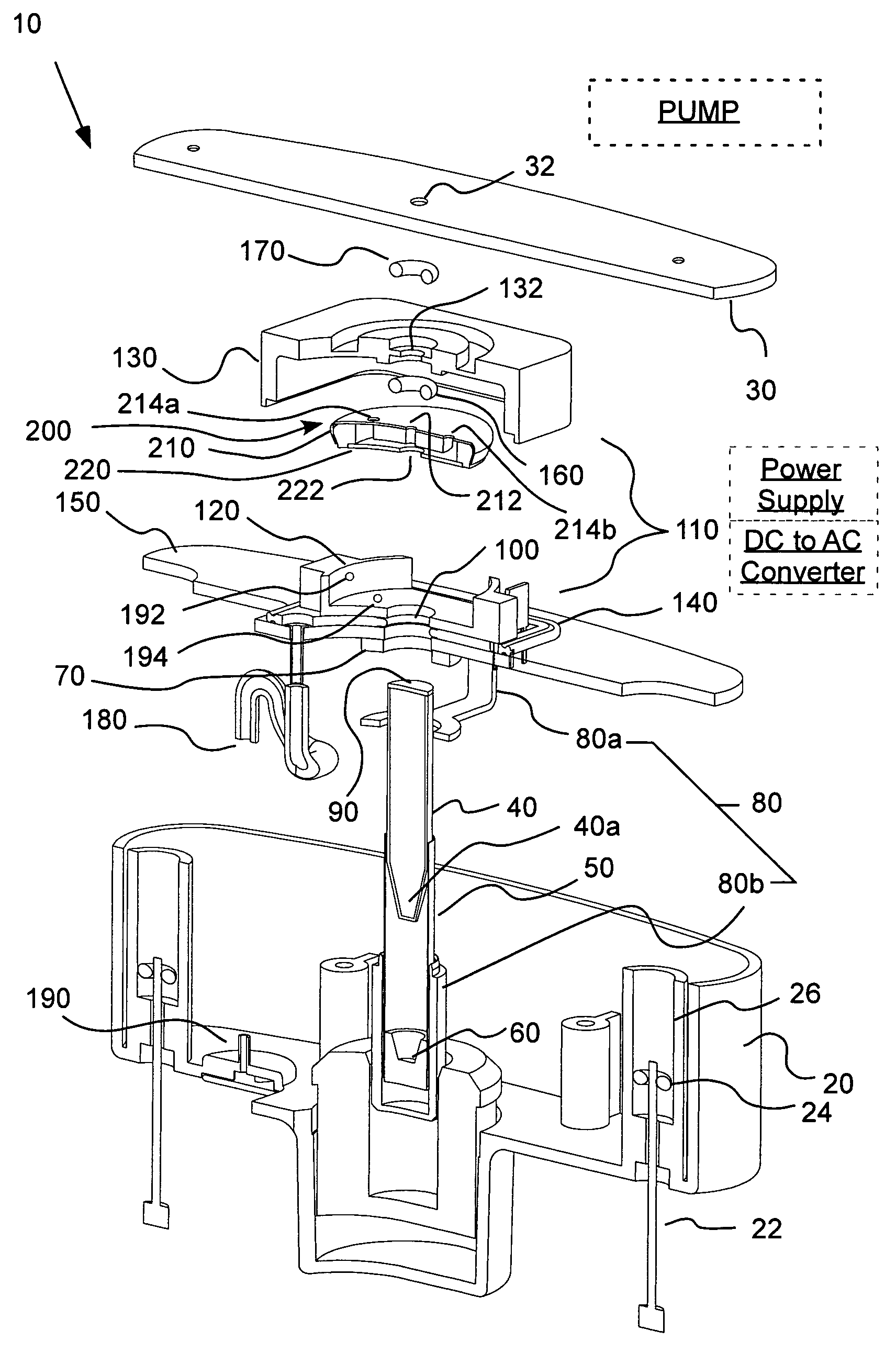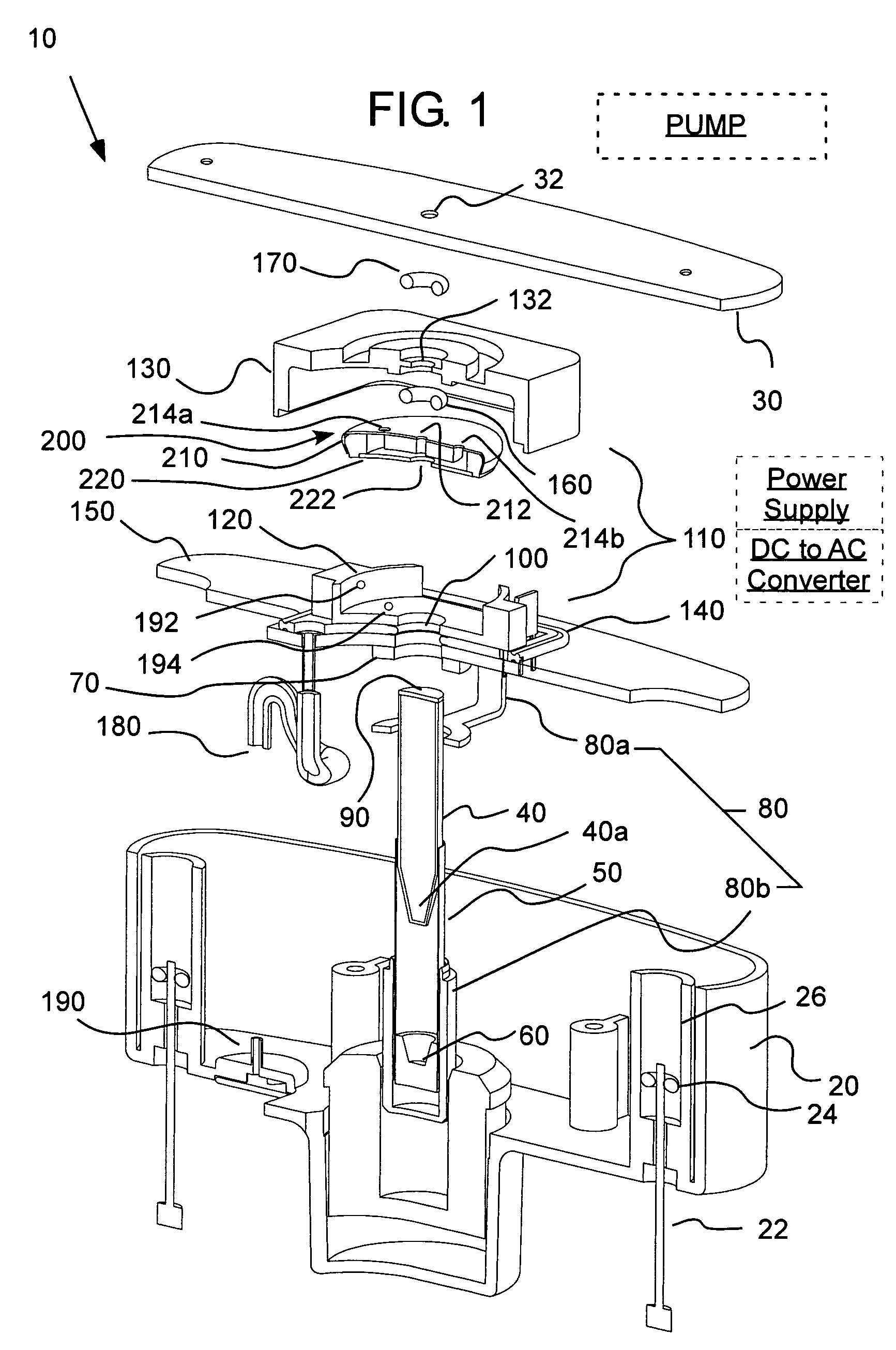Photoionization detectors, ionization chambers for use in photoionization detectors, and methods of use of photoionization detectors
a technology of ionization chamber and detector, which is applied in the field of photoionization detector, can solve the problems of increasing the contamination of the window surface, increasing the difficulty of ionization chamber manufacture, and increasing the difficulty of ionization chamber manufacturing, so as to reduce the resistance to ambient relative humidity
- Summary
- Abstract
- Description
- Claims
- Application Information
AI Technical Summary
Benefits of technology
Problems solved by technology
Method used
Image
Examples
Embodiment Construction
[0046]FIGS. 1 through 2B illustrate an embodiment of a PID 10 of the present invention, which can, in one embodiment include a detector housing 20 and a cooperating top enclosure or cap 30. Cap 30 can, for example, be maintained in connection with housing 20 via connectors such a screws 22. In the embodiment of FIGS. 1 through 2B, guides 24 (for example, annular members) guide screws 22 through a generally cylindrical screw well 26 to connect to cap 30.
[0047]As shown in FIG. 3A, housing 20 can also be connected to another housing 520 of an instrument 500, which can, for example, include one or more other gas sensors. Such other sensors can, for example, be electrochemical gas sensors. An embodiment of an ionization chamber 200a for use in a multi-sensor instrument is shown, for example, in more detail in FIGS. 5A–5D. As shown in FIG. 3B, the components of PID 10 can alternatively be incorporated within the housing 620 of a multi-sensor instrument assembly 600. In either case, some o...
PUM
| Property | Measurement | Unit |
|---|---|---|
| thickness | aaaaa | aaaaa |
| conductive | aaaaa | aaaaa |
| shape | aaaaa | aaaaa |
Abstract
Description
Claims
Application Information
 Login to View More
Login to View More - R&D
- Intellectual Property
- Life Sciences
- Materials
- Tech Scout
- Unparalleled Data Quality
- Higher Quality Content
- 60% Fewer Hallucinations
Browse by: Latest US Patents, China's latest patents, Technical Efficacy Thesaurus, Application Domain, Technology Topic, Popular Technical Reports.
© 2025 PatSnap. All rights reserved.Legal|Privacy policy|Modern Slavery Act Transparency Statement|Sitemap|About US| Contact US: help@patsnap.com



